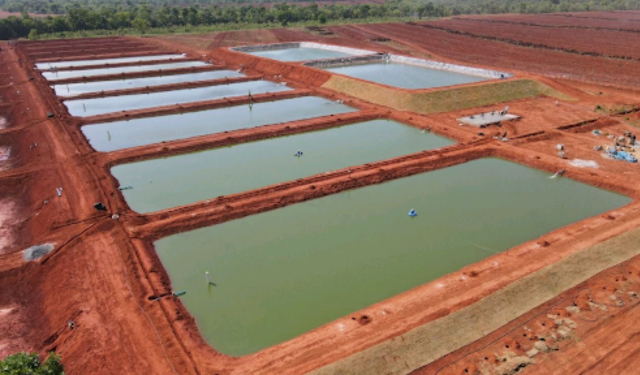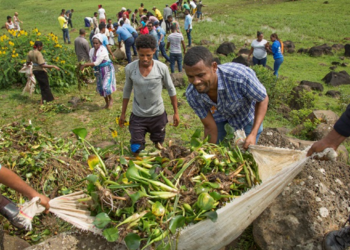Best Management Practices for the first steps in the onshore fish farming in Africa – BMPs reflect the most technically practical and economically feasible methods which reduce environmental impacts and limit operation costs at aquaculture.
We present in this article the first 3 key elements of best pond management practices in fish farms, namely:
1 – Site selection and design of basins.
2 – Preparation and processing of ponds for culture.
3 – Types of farmed fish and culture rates.
The practices that we review in this short guide in detail are those suitable for the traditional fish farm with earthen ponds, which represents the most common model in Africa, and following these practices and applying them in the method of farm management contributes significantly to increasing the productivity of ponds, as these practices focus on guidance using good production elements such as fry and feed, as well as focusing on rationalizing the loss of production inputs such as feed and energy in order to achieve optimal utilization of the available land area and operating elements.
1-Site selection and design of basins:
Take into account that the site is suitable for the establishment of a fish farm in terms of providing adequate water sources in sufficient quantities and sustaining those sources. In addition, the site should have soil capable of retaining water.
The site selection for the installation of earthen pond farms, basically includes:
– Physico-chemical analysis of the soil to assess suitability for the creation of earthen basins.
– The presence of roads leading to the site.
– Proximity to markets.
– Availability of energy sources, electricity or fuel.
– Historical assessment of areas subject to natural disasters, such as areas subject to flooding, inundation and tides in the case of coastal lands – also taking climate change into account.
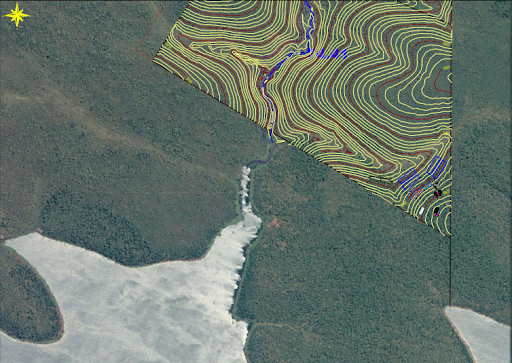
The following step includes the design of the aquaculture plant, focused on the following actions:
– Identify the topography of the site and its dimensions before construction to know the direction of water flow.
– Identify the prevailing weather conditions to know the direction of the wind.
– Determine the area to be used for the establishment of the farm.
– Determine the number of proposed ponds and their area according to the level of cultivation to be applied.
– Make a sketch of the farm showing the locations of the basins, irrigation and drainage channels, service areas and proposed buildings.
– The smaller the area of the basins, the easier their operations and management to maximize their productivity, and the optimal basin area is between 1, 2 acres.
– It is preferable that the length of the basin be from north to south geographic as much as possible in order to avoid the erosion of bridges by the wind.
– It is preferable as much as possible that the basins be rectangular in length twice the width to reduce construction costs and facilitate the management of the basin.
– Taking into account the inclination of the bridges and that they are tamped during construction to prevent water leakage from one basin to another in some areas, low bridges are established between the basins in which the mile is less than the inclination of the main bridge and their height is less than the main bridge by about a meter in this system the basins are connected to each other by raising the water level above the level of environmental bridges.
– It is like the surface of the bottom of the basin from the direction of irrigation to drainage to facilitate water drainage and drying the bottom.
– It is preferable to establish the fishing channel inside the basin with a very slight inclination towards the drainage so that the drying of the basin can be completed after harvest and the width of the fading is 2-3 m
Successively to the area of the basin.
– In small ponds and nurseries, the fading in the center of the basin is in a straight shape.
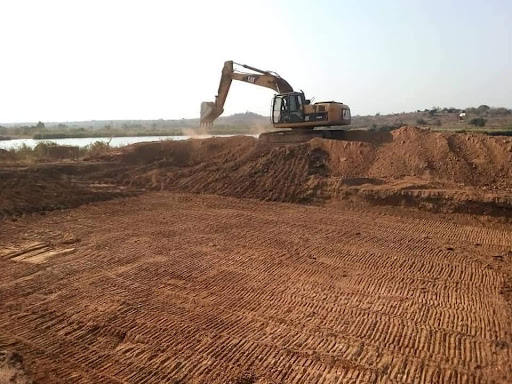
– Leave a distance between the fading and the bridge of not less than 3 m in order to facilitate the excavator to work in that space to clear the fading and in the case of soft land prefer to increase the distance between the fading and the bridge to double.
– The direction of the irrigation hole is opposite to the direction of the drainage hole.
– Pipes are used for irrigation and drainage holes and are made of strong plastic or PVC material with a diameter of 15-20 cm.
– An iron frame or a wide-hole plastic net is installed on the irrigation pipe on the outside of the irrigator, while a soft net is installed on it from the inside of the basin.
– Installed on the drainage pipes from inside the basin mesh with holes proportional to the size of the fish.
– It is preferable to have the level of the drainage pipe at the bottom of the basin in order to achieve the method of bottom drainage, while the level of the irrigation pipe is above the surface of the water as much as possible.
2 – Preparation and processing of ponds for culture:
The process of preparing and equipping ponds for culture is carried out by following the following:
A: Drainage and drying
Water should be drained from the basins and dry the fading as well as possible, and the floor of the basins should be dried until cracking, as this helps to improve the properties of the soil and get rid of some of the accumulated organic residues from the previous season.
B: The disinfection process varies according to the presence or absence of previous disease conditions in the basin, in the absence of pathological cases, disinfection is not required, but in the case of previous disease cases, disinfection is done by adding quicklime at a rate of 250 to 500 kg per acre, excessive use of quicklime increases the degree of alkalinity of the soil, which is undesirable as the soil of most the lands is alkaline.
In the event that it is not possible to completely dry the fading, appropriate disinfectants are used in the remaining water stains to get rid of unwanted fish, and environmentally safe and hygienic materials should be used when resorting to such measures.
C: Plowing scribble the bottom of the basin:
It is preferable to scribble the floor of the basin or plow it lightly to get rid of the pathogens as well as organic residues by exposing them to the sun.
D: Maintenance of fading and bridges:
It is preferable to carry out seasonal maintenance of fading by the excavator and raise sediment from it, as well as maintenance of bridges and adjust their tendencies if necessary.
E: Maintenance of irrigation sockets and drainage holes:
It is also preferable to carry out maintenance of irrigation channels during the maintenance of the ponds if necessary, as well as to ensure the safety of the nets installed on the irrigation and drainage holes to prevent the exit of fish or the entry of foreign fish to the basin.
3 – Types of farmed fish Farming rates:
The common farmed species in Africa and their juveniles sources include both Nile tilapia and Red Tilapia and African Catfish, particularly:
– Nile tilapia is the main type of culture in Africa and often used in combination with catfish farming.
– It is preferable to cultivate fish breeds with good specifications that are characterized by high growth rates.
– It is important that fry are purchased from reputable hatcheries that have already been tried, and it is preferable to avoid dealing with brokers or traders of fry of unknown origin.
– It is preferable to buy fry that are transported in bags because they are highly energetic, where the number can be estimated by pressing, which facilitates the process of housing the required numbers for each basin.
– When buying fry, take into account that they are of high vitality, homogeneous in size and free from apparent pathological symptoms.
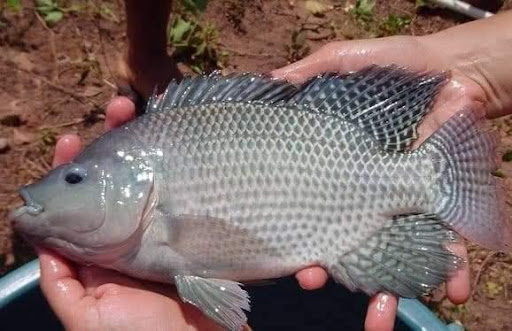
Best Management Practices for the first steps in the onshore fish farming in Africa
Best Management Practices for the first steps in the onshore fish farming in Africa

